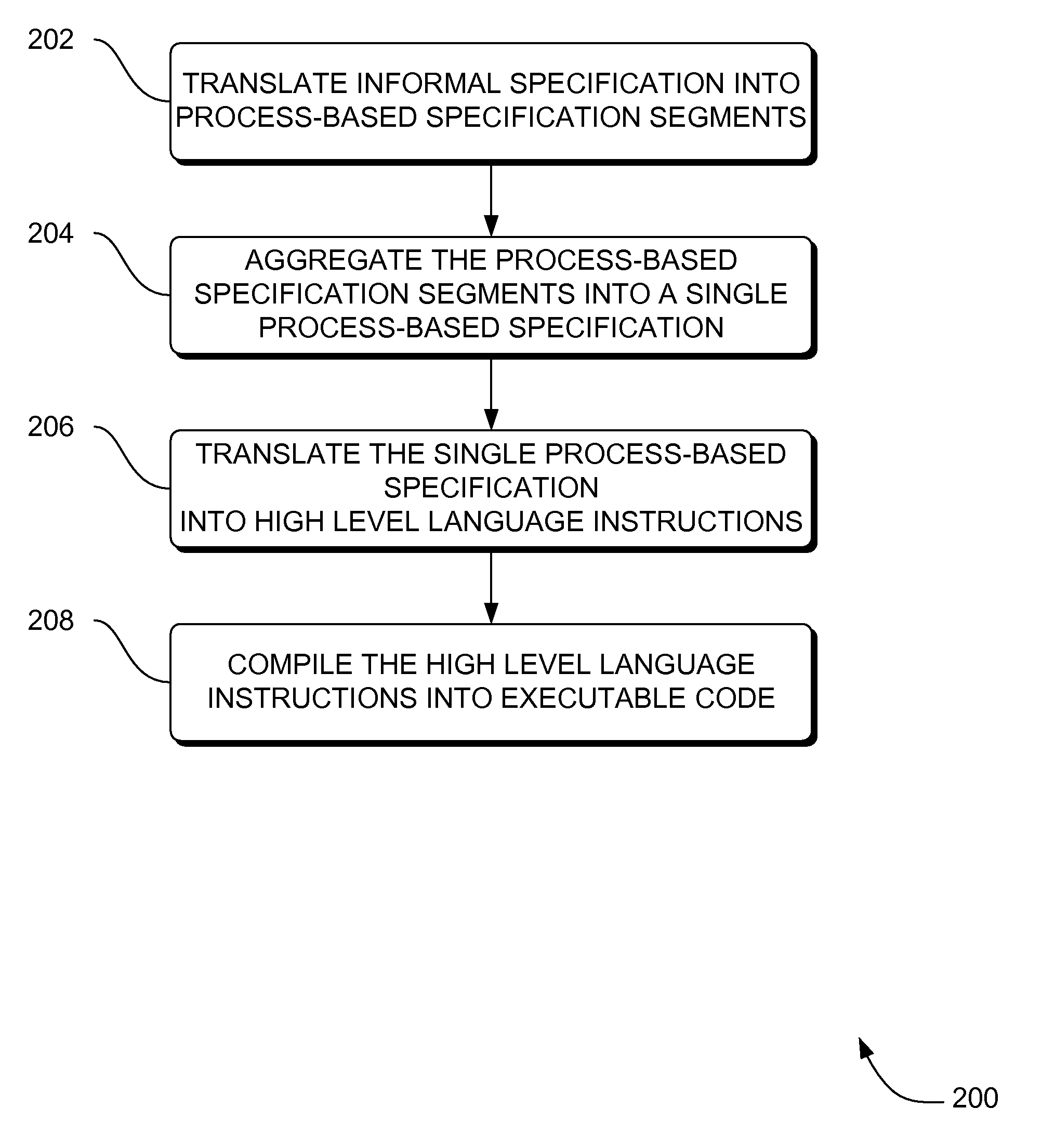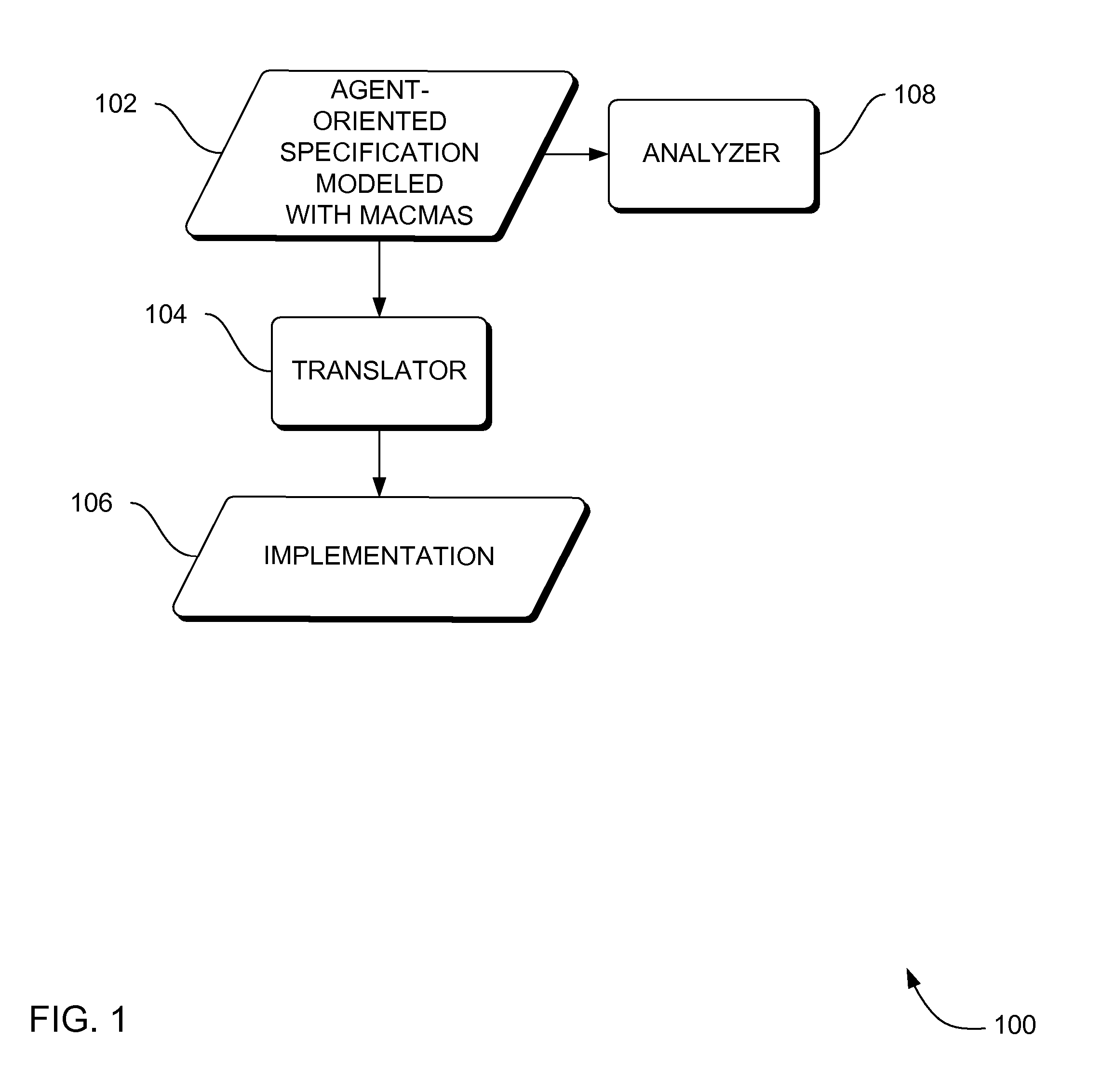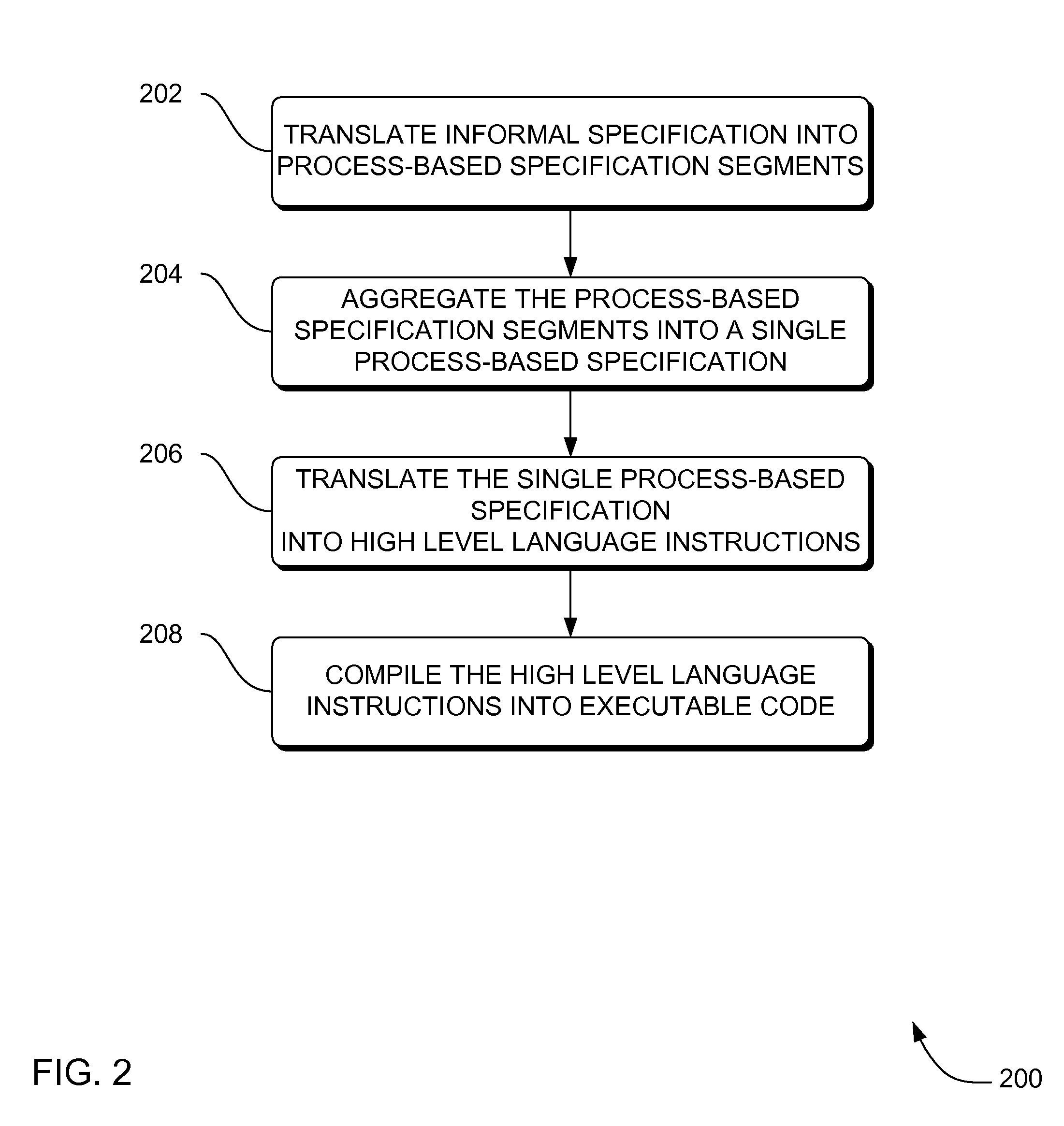Systems, methods and apparatus for modeling, specifying and deploying policies in autonomous and autonomic systems using agent-oriented software engineering
- Summary
- Abstract
- Description
- Claims
- Application Information
AI Technical Summary
Benefits of technology
Problems solved by technology
Method used
Image
Examples
Embodiment Construction
[0066] In the following detailed description, reference is made to the accompanying drawings that form a part hereof, and in which is shown by way of illustration specific embodiments which can be practiced. These embodiments are described in sufficient detail to enable those skilled in the art to practice the embodiments, and other embodiments are understood as utilized and that logical, mechanical, electrical and other changes can be made without departing from the scope of the embodiments. The following detailed description is, therefore, not to be taken in a limiting sense.
System Level Overview
[0067]FIG. 1 is a block diagram that provides an overview of a system to engineer and verify an implementation from an agent-oriented specification modeled with methodology fragment for analyzing complex multiagent systems (MaCMAS), according to an embodiment. System 100 may solve the need in the art for an automated, generally applicable way to verify that an implementation is a provabl...
PUM
 Login to View More
Login to View More Abstract
Description
Claims
Application Information
 Login to View More
Login to View More - R&D
- Intellectual Property
- Life Sciences
- Materials
- Tech Scout
- Unparalleled Data Quality
- Higher Quality Content
- 60% Fewer Hallucinations
Browse by: Latest US Patents, China's latest patents, Technical Efficacy Thesaurus, Application Domain, Technology Topic, Popular Technical Reports.
© 2025 PatSnap. All rights reserved.Legal|Privacy policy|Modern Slavery Act Transparency Statement|Sitemap|About US| Contact US: help@patsnap.com



